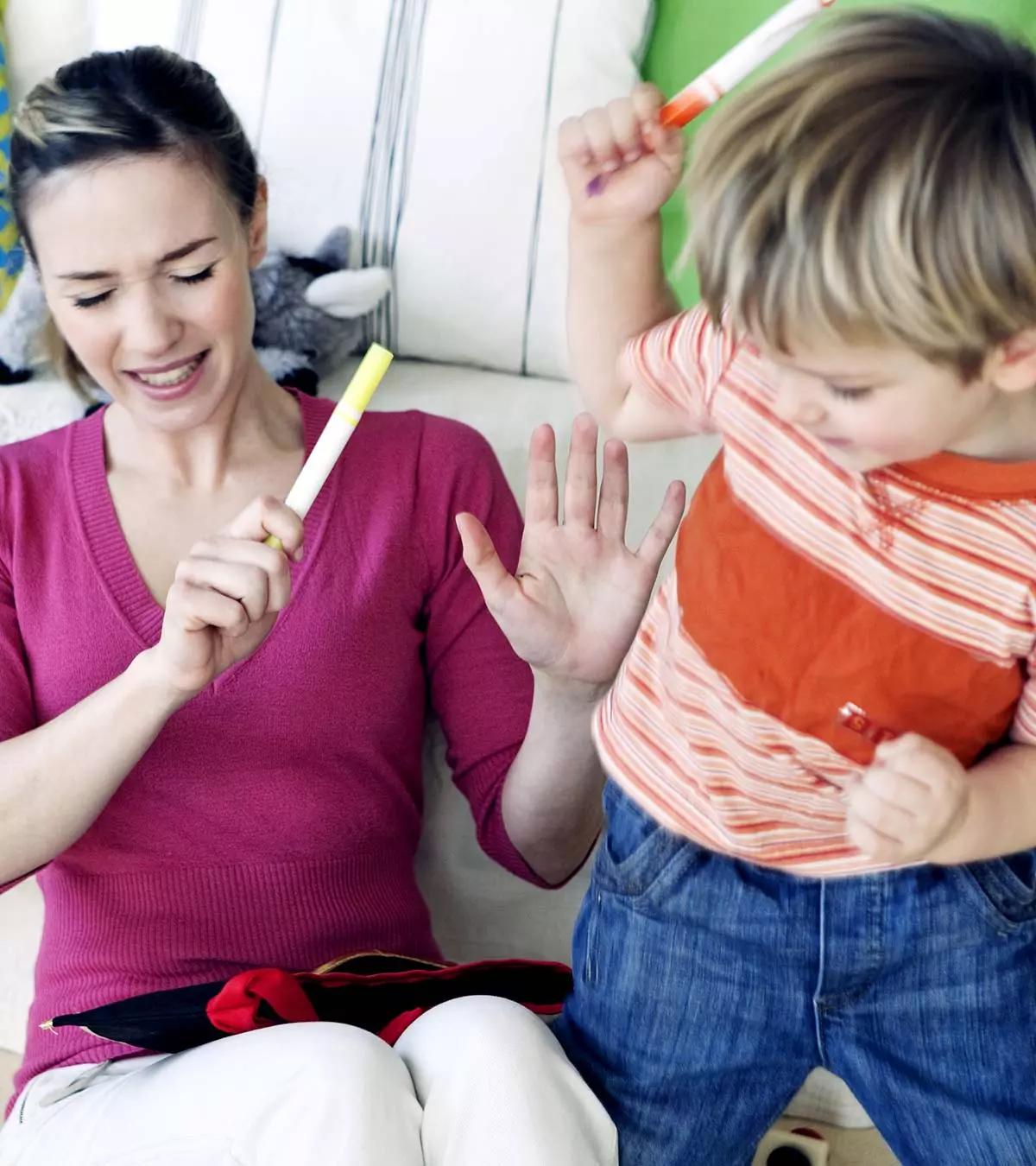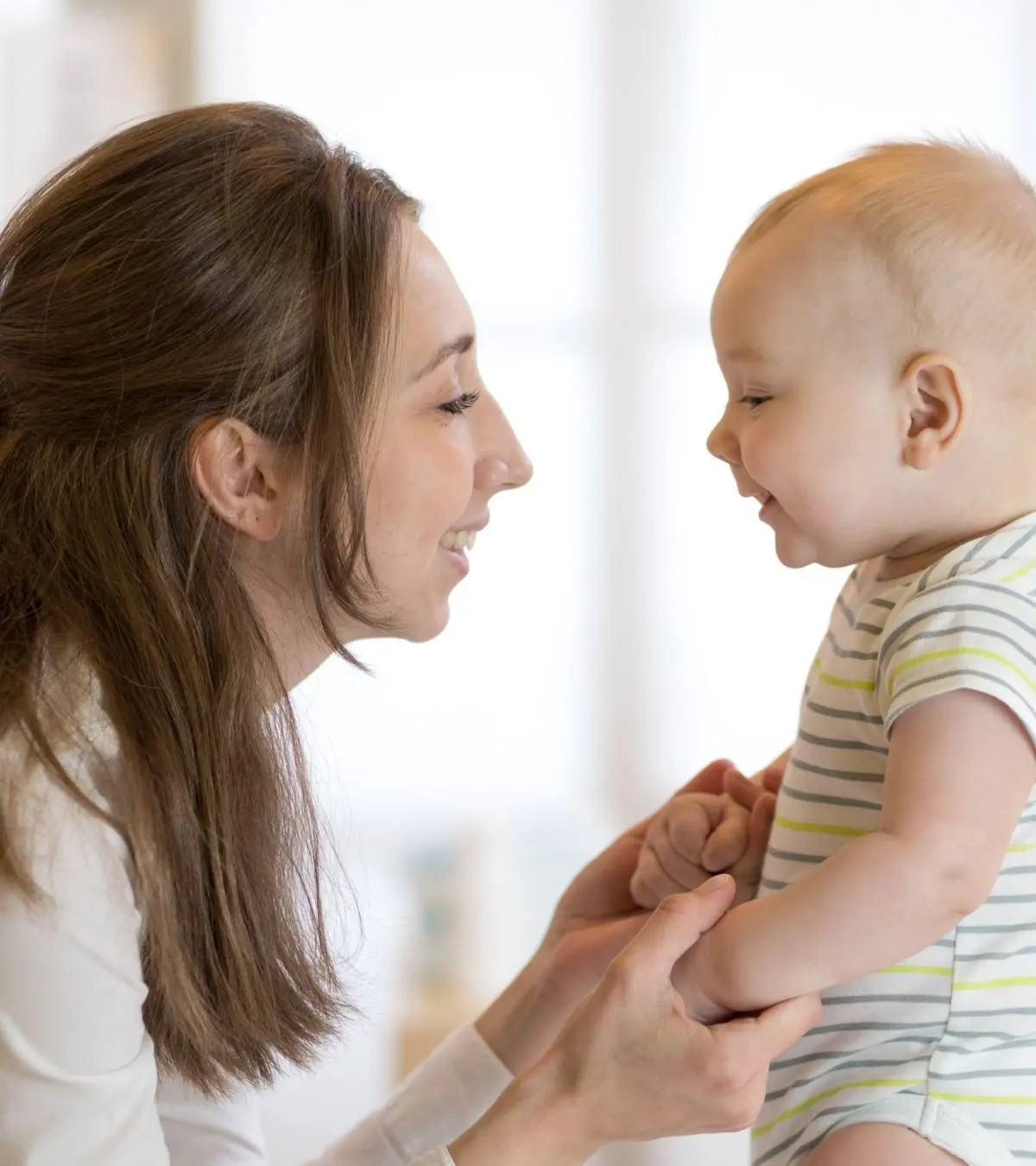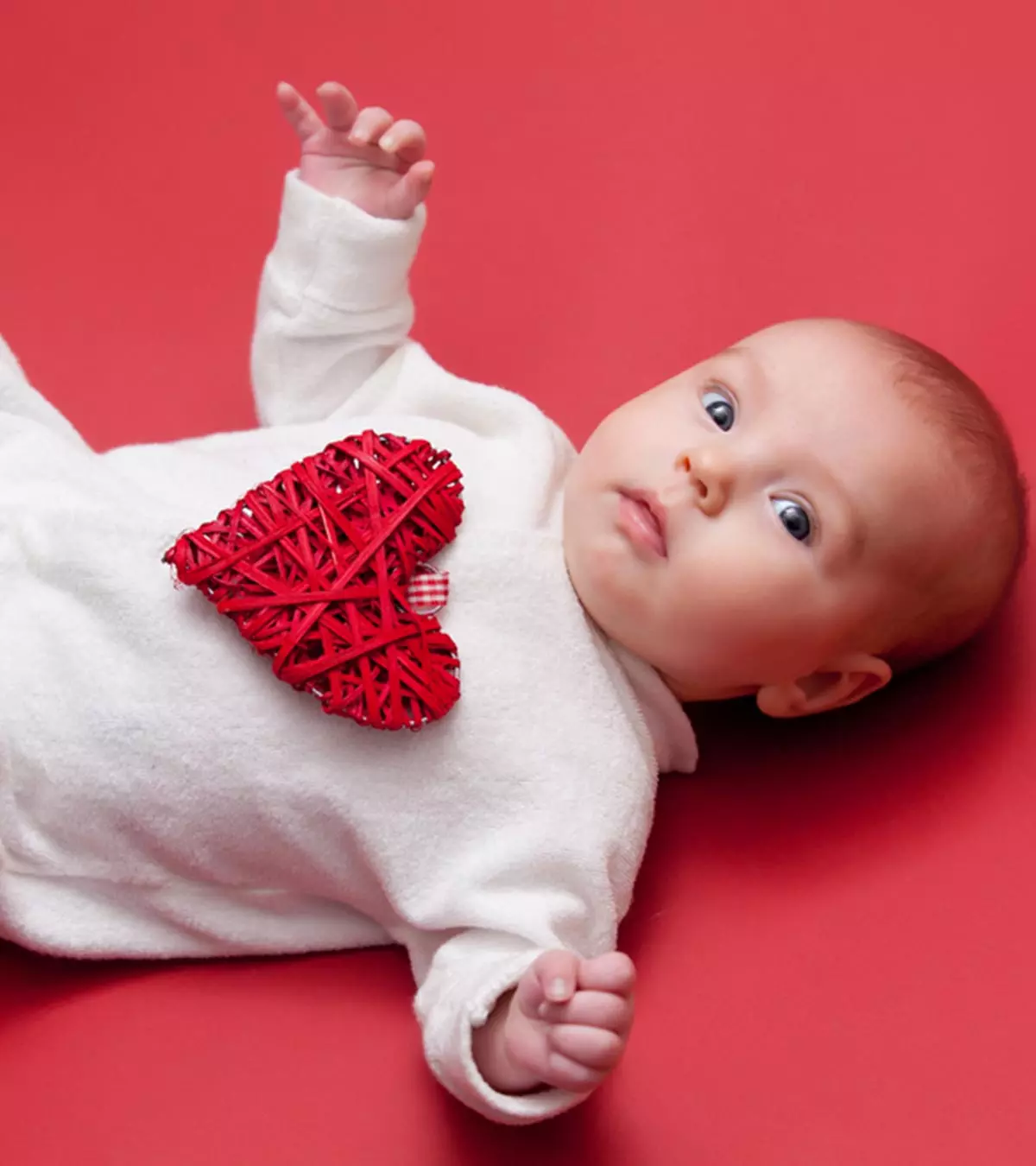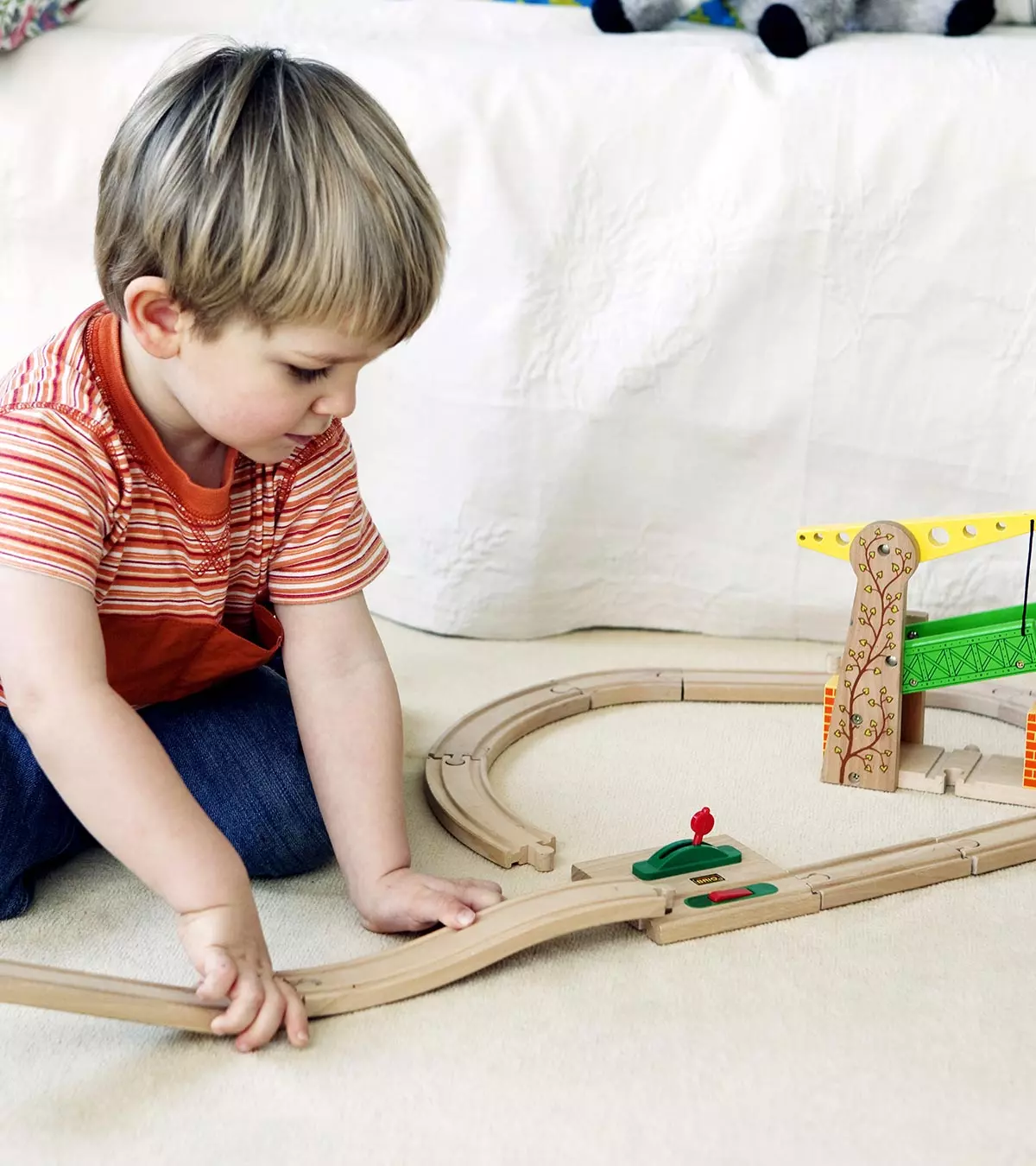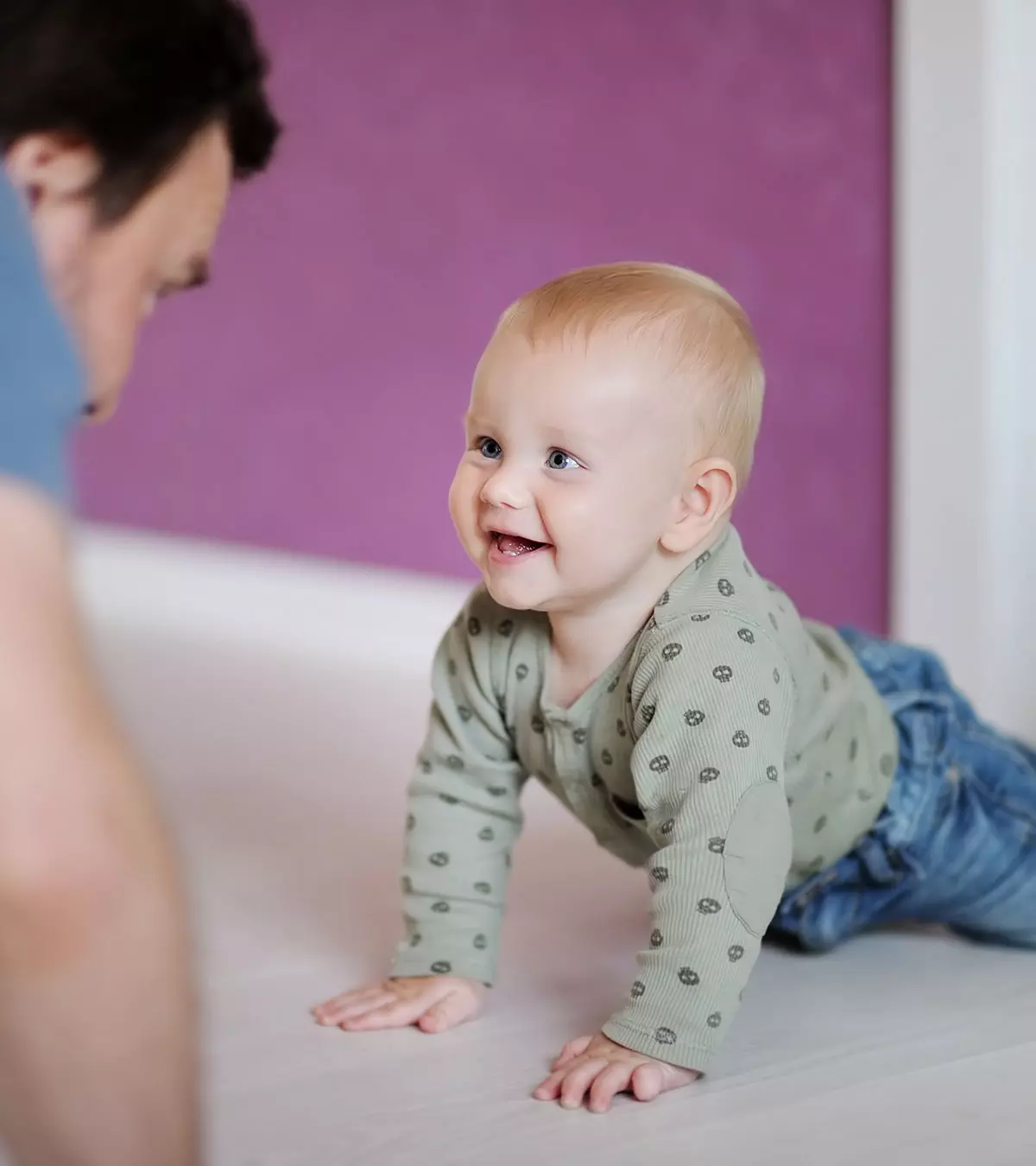
Image: Shutterstock
You are most excited to see your baby crawl for the first time. However, babies crawling backward may seem odd and raise some concerns. It turns out it is normal for some infants to first crawl backward before learning to go forward (1). It should not be considered unusual as long as they can use their limbs to propel across the floor.
It may be difficult for some babies to coordinate between arms and legs while maintaining balance and posture while crawling. But let them move at their own pace, and they’ll gradually master the technique.
This post will tell you everything you need to know about crawling backward seen in babies and why it is not a matter of concern.
 Did you know?
Did you know?Key Pointers
- Crawling forward and backward are both natural for babies.
- Crawling is part of an infant’s gross motor development, which includes sitting, walking, and running.
- Initially, babies have more developed upper bodies than lower ones, which is why they may crawl backward.
- Motivate babies to crawl forward by placing their favorite toys in front of them, encouraging them with food and praise, and using positive reinforce
Why Does A Baby Crawls Backwards?
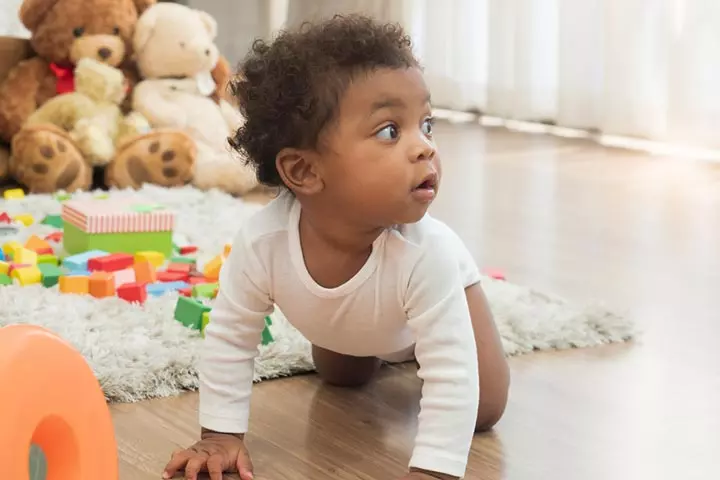
Image: Shutterstock
Crawling is part of an infant’s gross motor development, which refers to big muscle movements such as the ability to sit, walk, and run. Though seemingly simple, these gross motor skills require nerves, muscles, and bones to work in tandem and well.
When your little one begins to crawl, usually between six and nine months (2), she may choose the easiest and the most efficient way such as the commando crawl, in which she shuffles around her tummy. If the little one finds it easy to crawl backwards, she may opt for it for many reasons.
- If the baby feels stronger on arms than on legs, she will push herself back and crawl backward or scoot backward (3).
- The upper bodies of babies are more developed than the lower ones initially, which is another reason for babies crawling backward.
When her legs get stronger, the little one begins to crawl forward. Even if she skips to crawl forward or skips crawling altogether, it is completely normal. It does not mean that she has missed a milestone. Note that preterm babies may take more time than their peers to reach such milestones. Sometimes, infants who are above the normal weight may take more time to crawl, than other healthy ones.
How To Encourage My Baby To Crawl Forward?
Your angel will learn to crawl forward on her own. If you wish to help your little one crawling forwards, indulge in a few activities to encourage her.
- Put her favorite toy a little out of reach in front of her and encourage her to crawl towards it. She may struggle but let her try and do not assist immediately.. As she tries, the muscles required for crawling forward gets stronger.
- Get yourself down on the floor and show her how to crawl forward. You could be funny as you do that.

Image: Shutterstock
- Once your baby comes to a crawling position, gently propel her forward by placing your hand on her bottom.
- Try moving her legs and arms to get the feeling of moving forward.
- Entice your little one forward with her favorite food.
- Use tummy time mats for your baby to practice crawling.
- Encourage your baby to rock back and forth on their hands and knees. This natural movement helps them build strength and coordination.
- Your little one needs loads of praise and encouragement from you to learn something new. Shower them with praise and see the difference.
- Set up a safe play space with different textures and toys to encourage crawling exploration. A stimulating environment can inspire your baby to try new movements and build their skills.
 Be watchful
Be watchfulFrequently Asked Questions
1. What are the stages of crawling?
Before babies start crawling effortlessly, they go through certain stages of crawling. These may include:
2. Does asymmetrical crawling mean autism?
Children with autism may display early signs of asymmetrical crawling (7). However, it should not be taken as a sole symptom to diagnose autism.
3. Are there any developmental concerns associated with crawling backward?
While some babies may prefer to retreat while crawling initially, it is generally not a cause for concern unless it persists and hinders their ability to develop other important motor skills, such as the reverse or forward crawling.
4. Is there a difference in cognitive development between babies who crawl backward and those who crawl forwards?
No, there is no difference in cognitive development between babies who crawl backward and those who crawl forwards.
5. Can babies who crawl backward still learn to walk normally?
Yes. Babies who crawl backward learn to walk normally since both crawling techniques eventually help them improve their posture, maintain balance and strengthen their muscles.
There might be many reasons why babies crawl backward. Though there is no harm in them doing so, you may try to encourage them to crawl forward using simple techniques. However, you should not force your babies to crawl forward, especially when they are still learning the walking and crawling skills. Also, avoid comparing your little ones with their peers or siblings since every baby has its own pace of attaining various milestones. It is worth remembering that backward crawling is just a temporary practice, as in the coming months, your little one will be seen walking and running around.
Infographic: How To Help The Baby Crawl Forward?
There could be many reasons behind your baby crawling backward, but it mainly happens if they feel stronger on their arms than on their legs. Although this does not harm the baby, you may try the activities given in the infographic below to encourage them to move forward. Keep reading! Illustration: Momjunction Design Team
Illustration: Baby Crawling Backwards - Is It Normal?

Image: Stable Diffusion/MomJunction Design Team
Dive into the fascinating realm of baby crawling styles. Plus, find out the stages of crawling development and adore this developmental milestone through this video.
References
- Important Milestones: Your Baby By Six Months.
https://www.cdc.gov/ncbddd/actearly/milestones/milestones-6mo.html - Infant – newborn development.
https://medlineplus.gov/ency/article/002004.htm - Will Baby Crawl?.
https://new.nsf.gov/discoveries/disc_summ.jsp?cntn_id=103153 - Important milestones: Your baby by two months
https://www.cdc.gov/ncbddd/actearly/milestones/milestones-2mo.html - Important milestones: Your Baby By Four Months.
https://www.cdc.gov/ncbddd/actearly/milestones/milestones-4mo.html - Movement coordination and your 8 month to 12 month old.
https://kidshealth.org/en/parents/move812m.html - Sally Ozonoff et al. (2008); Gross motor development, movement abnormalities, and early identification of autism.
https://scholar.dominican.edu/cgi/viewcontent.cgi?article=1106&context=all-faculty
Community Experiences
Join the conversation and become a part of our nurturing community! Share your stories, experiences, and insights to connect with fellow parents.
Read full bio of Dr. Wayne Hough
Read full bio of Rohit Garoo
Read full bio of Dr. Ritika Shah
Read full bio of Vibha Navarathna










